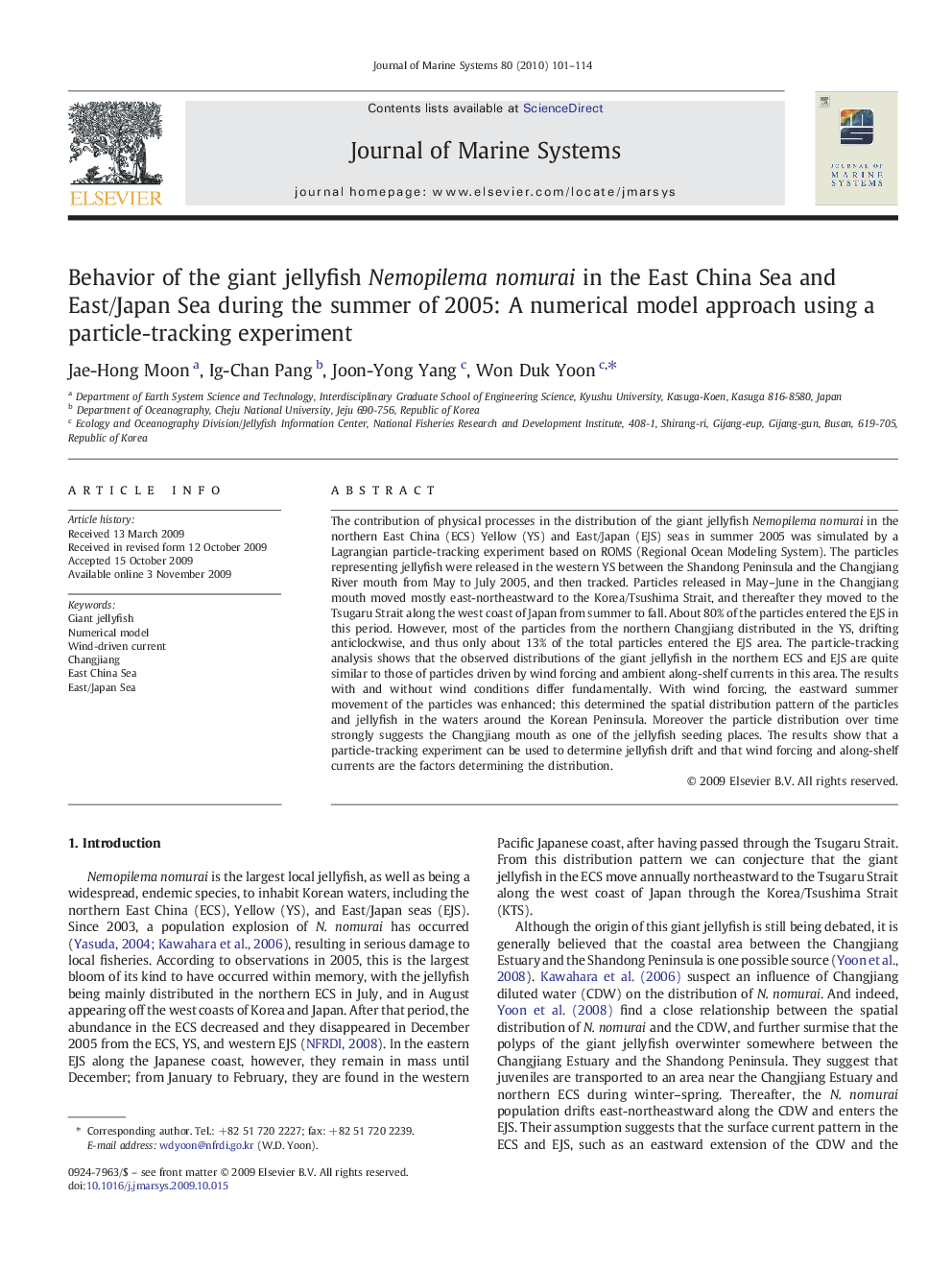| کد مقاله | کد نشریه | سال انتشار | مقاله انگلیسی | نسخه تمام متن |
|---|---|---|---|---|
| 4548648 | 1627335 | 2010 | 14 صفحه PDF | دانلود رایگان |

The contribution of physical processes in the distribution of the giant jellyfish Nemopilema nomurai in the northern East China (ECS) Yellow (YS) and East/Japan (EJS) seas in summer 2005 was simulated by a Lagrangian particle-tracking experiment based on ROMS (Regional Ocean Modeling System). The particles representing jellyfish were released in the western YS between the Shandong Peninsula and the Changjiang River mouth from May to July 2005, and then tracked. Particles released in May–June in the Changjiang mouth moved mostly east-northeastward to the Korea/Tsushima Strait, and thereafter they moved to the Tsugaru Strait along the west coast of Japan from summer to fall. About 80% of the particles entered the EJS in this period. However, most of the particles from the northern Changjiang distributed in the YS, drifting anticlockwise, and thus only about 13% of the total particles entered the EJS area. The particle-tracking analysis shows that the observed distributions of the giant jellyfish in the northern ECS and EJS are quite similar to those of particles driven by wind forcing and ambient along-shelf currents in this area. The results with and without wind conditions differ fundamentally. With wind forcing, the eastward summer movement of the particles was enhanced; this determined the spatial distribution pattern of the particles and jellyfish in the waters around the Korean Peninsula. Moreover the particle distribution over time strongly suggests the Changjiang mouth as one of the jellyfish seeding places. The results show that a particle-tracking experiment can be used to determine jellyfish drift and that wind forcing and along-shelf currents are the factors determining the distribution.
Journal: Journal of Marine Systems - Volume 80, Issues 1–2, 20 February 2010, Pages 101–114